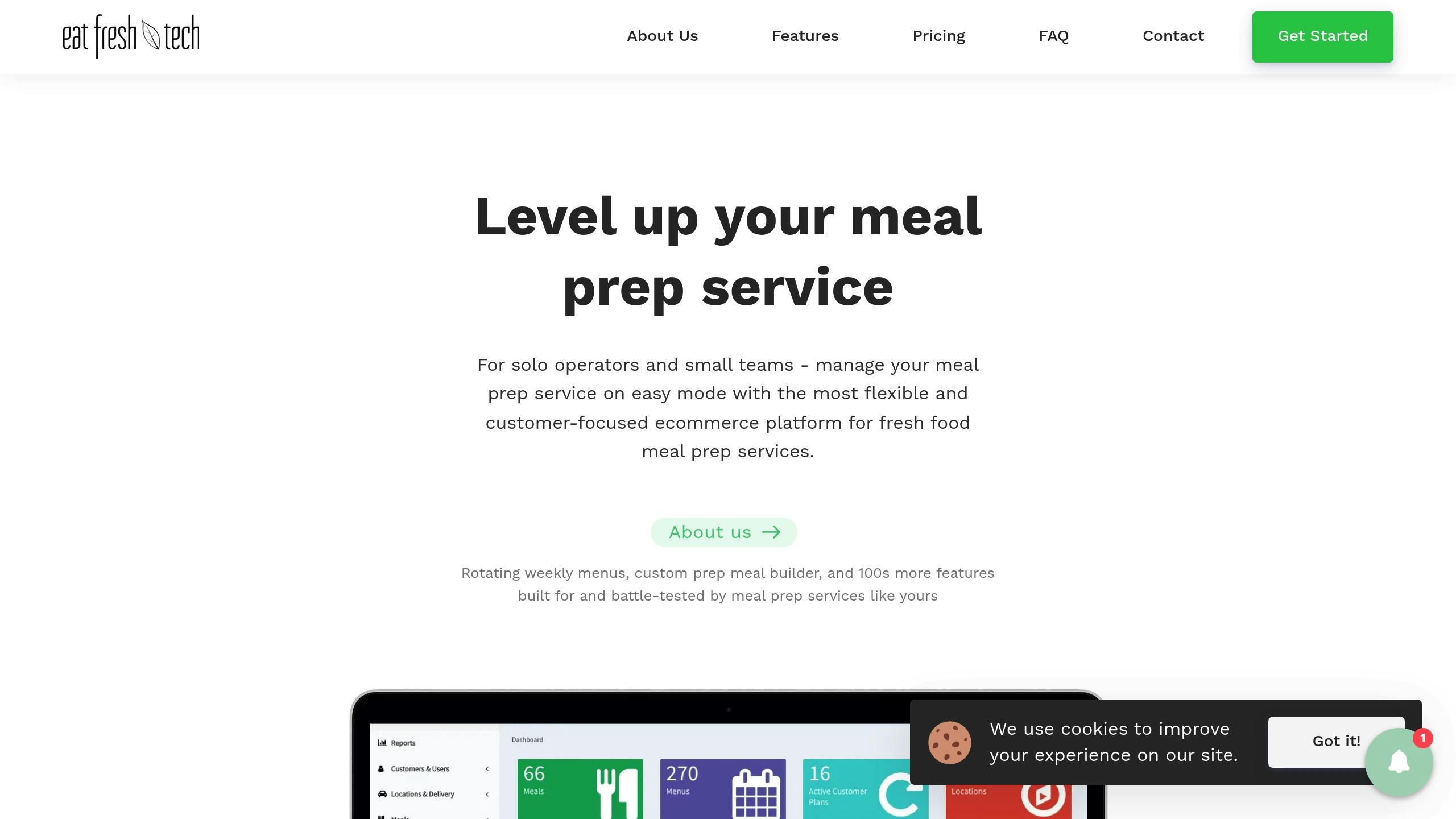- What are HACCP Corrective Actions?
- Pre-planned steps to address allergen issues during food production.
- Includes immediate responses, root cause analysis, process adjustments, and documentation.
- Key Allergen Control Points:
- Ingredient receiving: Check for damaged packaging and proper labeling.
- Storage: Prevent cross-contact with proper segregation.
- Production: Use dedicated equipment and follow strict cleaning protocols.
- Packaging: Ensure accurate labeling and allergen warnings.
- Steps for Corrective Actions:
- Stop production and isolate affected products.
- Notify the food safety team and document incidents.
- Perform validated cleaning and testing.
- Investigate the root cause through process analysis and supplier checks.
- Tools for Allergen Safety:
- Use digital systems for real-time allergen tracking, automated labeling, and monitoring.
- Employ testing tools like ATP sensors and airborne allergen detectors.
- Train Your Team:
- Focus on cross-contamination prevention, cleaning protocols, and emergency responses.
- Validate knowledge through assessments and keep records updated.
HACCP Corrective Actions
Finding Allergen Control Points
Pinpointing allergen control points is key to minimizing risks in food preparation. These are specific stages where allergens can either enter the process, be managed, or be removed. Monitoring these areas closely ensures better safety measures.
Common Allergen Risk Areas
| Control Point | Risk Factors | Critical Monitoring Steps |
|---|---|---|
| Ingredient Receiving | Damaged packaging, incorrect labeling | Check supplier documentation, visual inspections |
| Storage Areas | Cross-contact from spills, poor segregation | Use dedicated zones, sealed containers |
| Production Lines | Shared equipment, insufficient cleaning | Assign specific equipment, follow cleaning protocols |
| Packaging/Labeling | Mislabeling, incorrect allergen info | Verify labels, use batch control systems |
Using batch sequencing helps reduce cross-contact. For example, Whole Foods Market introduced dedicated allergen zones and color-coded utensils in 2019, cutting complaints by 78% [2]. These measures directly support the immediate response actions discussed earlier and lay the groundwork for creating focused corrective strategies, which will be detailed in the next section.
Allergen Rules and Standards
Key operational practices include:
- Developing written food safety plans with allergen-specific controls
- Preventing cross-contact with physical or time-based separation
- Clearly labeling all products containing allergens
- Verifying cleaning processes between allergen batches
Digital tracking systems can also help by providing real-time monitoring and automated documentation at these control points. We'll dive deeper into how these tools can enhance allergen safety in the upcoming section on Tools for Allergen Safety.
Creating Corrective Action Steps
Managing allergens effectively means having clear plans in place for handling problems when they arise at critical points.
Quick Response Steps
When allergens are detected, take these immediate actions:
| Phase | Action | Verification Step |
|---|---|---|
| Immediate Containment | Stop production and isolate affected products | Record batch numbers and quantities |
| Alert Protocol | Notify the food safety team and management | Log notification times and details |
| Equipment Management | Perform validated sanitation protocols | Conduct allergen-specific testing |
| Documentation | Review production records and logs | Create an incident report with a timeline |
For instance, in June 2022, HelloFresh faced an issue with undeclared wheat in their Tex-Mex Ground Beef meal kits. They promptly stopped distribution and carried out a full recall process [5].
Finding the Source of Allergen Issues
To pinpoint the cause of allergen contamination, a detailed root cause analysis is essential. This involves gathering and reviewing evidence systematically.
- Process Flow Analysis: Start by thoroughly examining your production line for potential contamination points.
- Supplier Verification: Check with suppliers to identify any changes in formulations or processes.
- Staff Investigation: Interview employees involved in production to uncover any recent procedural changes or unusual events [1].
Using tools like Eat Fresh Tech's platform can simplify this process. Their system helps track ingredient movements, verify cleaning tasks, and log corrective actions automatically.
Tools for Allergen Safety
Modern tools, combined with root cause analysis, offer practical ways to implement and confirm corrective actions for allergen safety.
Monitoring Systems
Digital sensors and monitoring tools are essential for managing allergens effectively. For example, the AllergenSense system uses air quality sensors to detect airborne allergen proteins in real time [3]. This allows immediate action, such as halting production, to stop contaminated products from reaching consumers.
| Component | Function | Link to Corrective Action |
|---|---|---|
| ATP Testing Sensors | Detects surface contamination | Confirms cleaning effectiveness |
| Cleaning Solution Sensors | Ensures proper sanitation levels | Verifies sanitation protocols |
| Airborne Particle Detectors | Tracks allergen proteins in air | Reduces cross-contamination risks |
Digital Allergen Tracking
Eat Fresh Tech offers a platform that automates meal labeling and provides real-time allergen filtering. It also documents contamination alerts directly into HACCP records, simplifying compliance.
Digital tracking systems are particularly helpful for corrective actions by offering:
- Immediate allergen detection results
- Automated logs of testing procedures
- Digital audit trails for regulatory compliance
To be most effective, these systems should seamlessly integrate with other operations, ensuring allergen safety is managed across all stages of production.
Staff Training and Testing
Ensuring allergen safety starts with a well-trained team that understands and consistently applies HACCP corrective actions. Ongoing training and testing are essential for managing allergen risks effectively.
Allergen Safety Training
Digital tools can enhance safety measures, but their success depends on the team's skills and knowledge. A good starting point is the ServSafe Allergens certification program, which equips food service workers with critical allergen safety knowledge. Training should emphasize the eight major allergens and their risks in commercial kitchens.
Here are some key areas to focus on during training:
| Training Area | Focus Points | Validation |
|---|---|---|
| Cross-contamination | Proper handling and storage protocols | Practical assessments |
| Cleaning Procedures | Allergen-specific sanitation methods | Surface testing validation |
| Emergency Response | Identifying reactions and action steps | Scenario simulations |
| Documentation | HACCP record-keeping requirements | Regular audits |
Interactive simulations and digital modules can make a big difference, improving protocol retention by 47% compared to traditional lectures.
Testing and Records
To ensure HACCP corrective actions are effective, staff knowledge must be regularly tested, and documentation kept up to date. Testing validates whether containment and cleaning protocols are working as intended.
Some effective testing methods include:
- Practical Assessments: Observe staff as they demonstrate proper allergen handling techniques.
- Written Evaluations: Conduct regular quizzes on allergen safety principles and HACCP protocols.
- Surface Testing: Use allergen swab tests to confirm the success of cleaning procedures outlined in corrective action plans.
Digital systems can simplify documentation by centralizing records, automating reminders, and ensuring compliance with HACCP requirements, offering a more reliable alternative to manual tracking.
Summary
Implementing HACCP corrective actions effectively requires structured protocols and the use of technology. According to "Finding Allergen Control Points", success starts with pinpointing and keeping track of critical points. This approach has been shown to cut allergen recalls by 60% [6].
Key Steps Review
Managing allergens effectively involves focusing on three main protocols:
- Identifying and monitoring critical control points
- Establishing clear investigation and response procedures
- Regularly validating and documenting corrective actions
Eat Fresh Tech Allergen Features

To put these practices into action, digital tools like Eat Fresh Tech can play a crucial role. This platform is tailored for meal prep businesses and simplifies allergen management by offering:
- Automated Allergen Tracking: Tracks ingredients and potential cross-contact points in real time
- Smart Labeling: Creates precise allergen warnings and ingredient lists
With features like allergen and diet filtering, Eat Fresh Tech helps businesses maintain ingredient oversight and communicate clearly with customers. Combining digital solutions with HACCP protocols allows meal prep services to strengthen allergen safety and improve their response strategies.


